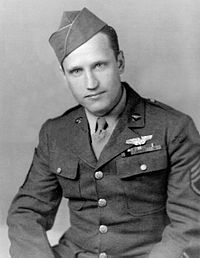This is the incredible story of Mitsuo Fuchida, lead pilot of the December 7, 1941, raid on Pearl Harbor. Fuchida was the one who shouted the war cry, “Tora, Tora, Tora!”
Mitsuo Fuchida fought the United States throughout WWII and was intimately involved in the planning and leadership of the Japanese war effort as flight commander and later as a senior operations officer.
After the war, Fuchida was a defeated warrior in occupied Japan, farming to meet the needs of his family. He was also the only one to return to Japan after the bombing.
In 1950, Fuchida miraculously came to know Jesus Christ as Savior through a tract handed to him while exiting a train in Tokyo. The tract was entitled, “I Was a Prisoner of Japan,” written by Jacob DeShazer who was one of the famous Doolittle Raiders. DeShazer trusted Christ as his Savior while held captive by Japan for 40 months. DeShazer went to Japan in 1948 as a missionary and preached to the nation who held him captive.
Fuchida faithfully served Jesus Christ as an evangelist until his death in 1976. “From Pearl Harbor to Golgotha” is Fuchida’s testimony of salvation. Here it is in his own words:
I must admit I was more excited than usual as I awoke that morning at 3:00 a.m., Hawaii time, four days past my thirty-ninth birthday. Our six aircraft carriers were positioned 230 miles north of Oahu Island. As general commander of the air squadron, I made last-minute checks on the intelligence information reports in the operations room before going to warm up my single-engine, three-seater “97-type” plane used for level bombing and torpedo flying.
The sunrise in the east was magnificent above the white clouds as I led 360 planes towards Hawaii at an altitude of 3,000 meters. I knew my objective: to surprise and cripple the American naval force in the Pacific. But I fretted about being thwarted should some of the U.S. battleships not be there. I gave no thought of the possibility of this attack breaking open a mortal confrontation with the United States. I was only concerned about making a military success.
May we remember not only those who died so we can live free, but also those who died before they could live free. Approximate American War Casualties in History: 1,319,729 Approximate Annual Abortions in America: 1,290,000 “When one person dies, it’s a tragedy, but when a million people die, it’s a statistic.” —Joseph Stalin Stalin
Charles Spurgeon writes: The whole system of Christianity rests upon the fact that “Christ is risen from the dead;” for, “If Christ be not risen, then is our preaching vain, and your faith is also vain: ye are yet in your sins.” The divinity of Christ finds its surest proof in his resurrection, since he
Lead Pearl Harbor Bomber Converts After Reading Tract
Mitsuo Fuchida fought the United States throughout WWII and was intimately involved in the planning and leadership of the Japanese war effort as flight commander and later as a senior operations officer.
After the war, Fuchida was a defeated warrior in occupied Japan, farming to meet the needs of his family. He was also the only one to return to Japan after the bombing.
In 1950, Fuchida miraculously came to know Jesus Christ as Savior through a tract handed to him while exiting a train in Tokyo. The tract was entitled, “I Was a Prisoner of Japan,” written by Jacob DeShazer who was one of the famous Doolittle Raiders. DeShazer trusted Christ as his Savior while held captive by Japan for 40 months. DeShazer went to Japan in 1948 as a missionary and preached to the nation who held him captive.
held captive by Japan for 40 months. DeShazer went to Japan in 1948 as a missionary and preached to the nation who held him captive.
Fuchida faithfully served Jesus Christ as an evangelist until his death in 1976. “From Pearl Harbor to Golgotha” is Fuchida’s testimony of salvation. Here it is in his own words:
I must admit I was more excited than usual as I awoke that morning at 3:00 a.m., Hawaii time, four days past my thirty-ninth birthday. Our six aircraft carriers were positioned 230 miles north of Oahu Island. As general commander of the air squadron, I made last-minute checks on the intelligence information reports in the operations room before going to warm up my single-engine, three-seater “97-type” plane used for level bombing and torpedo flying.
The sunrise in the east was magnificent above the white clouds as I led 360 planes towards Hawaii at an altitude of 3,000 meters. I knew my objective: to surprise and cripple the American naval force in the Pacific. But I fretted about being thwarted should some of the U.S. battleships not be there. I gave no thought of the possibility of this attack breaking open a mortal confrontation with the United States. I was only concerned about making a military success.
Read More